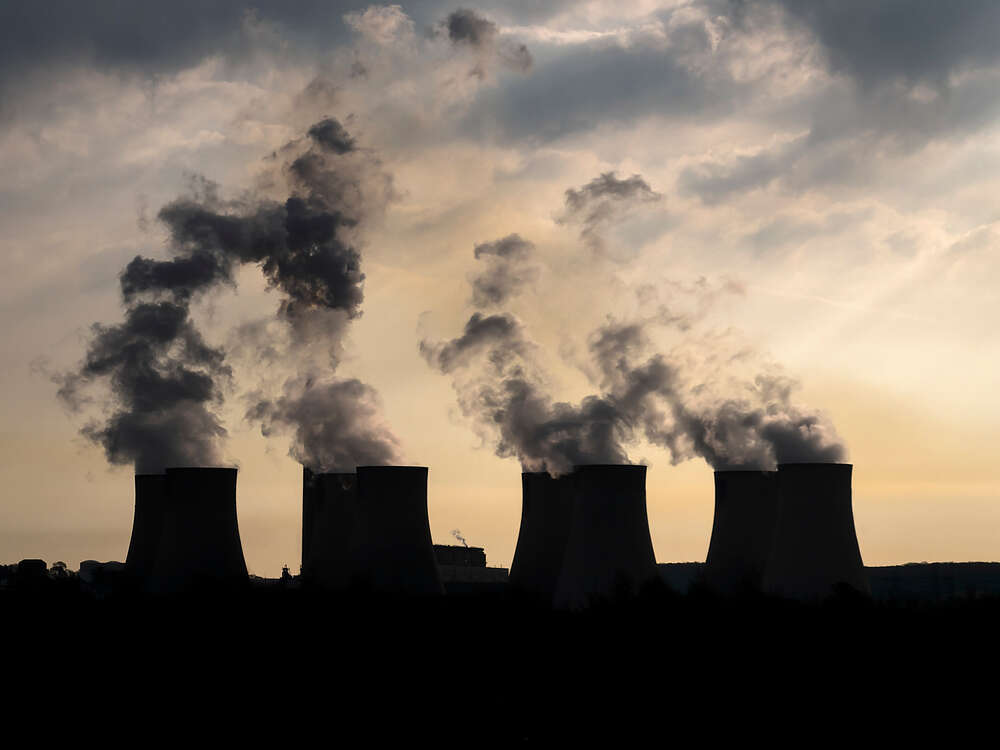
Without “immediate, rapid and large-scale reductions of all greenhouse gases,” global average temperatures are all but certain to reach more than 1.5 °C above pre-industrial levels, the UN’s Intergovernmental Panel on Climate Change (IPCC) warned this week. This will gravely endanger the health and livelihood of humanity around the world.

That warning should prompt businesses and governments to redouble their efforts to reduce emissions, including those caused by their IT systems. This is already a high priority for technology leaders: 71% of respondents to Tech Monitor’s Tech Leaders Agenda survey report that their IT function has a dedicated sustainability strategy, and 84% are focused on improving the efficiency of IT infrastructure.
But a study published in December last year suggests that current estimates for the global greenhouse emissions produced by the world’s ICT equipment may be as much as 50% too low because they overlook a significant part of the ICT supply chain. And by discounting how improved efficiency in IT might lead to increased usage, forecasts for the future growth of ICT emissions could be way off too.
If this analysis is correct, current efforts by the IT industry to reduce emissions may fall dangerously short.
What are the global greenhouse emissions from ICT equipment?
The study, written by Charlotte Freitag, Mike Berners-Lee (brother of web inventor Tim) and a team of researchers at Lancaster University, examines three peer-reviewed studies estimating the greenhouse gas emissions produced by ICT equipment. According to these estimates, ICT equipment (including TVs) was responsible for between 1.8% and 2.8% of global greenhouse emissions in 2020. This is in line with the European Commission’s estimate of 2%.
But the authors argue that all three studies use a methodology to estimate ICT emissions that excludes a significant proportion of the supply chain. This methodology, known as life-cycle analysis (LCA) allows researchers to estimate emissions for specific products but cannot model the "infinite" supply chain pathways that feed into their production.
"A factory manufacturing computers will itself use computers to manage the production, a small share of whose embodied carbon needs to be attributed to the factory’s output," the report says. These small shares, overlooked by LCA, add up to a substantial volume of emissions.
Using a methodology that combines LCA with a top-down estimate, Freitag and colleagues estimate that ICT's emissions for 2020 were in fact between 2.1-3.9% of global emissions. The upper bound of this range is double the lower end of the original studies' estimates, and suggests the EC's estimate could be significantly too low.
Will ICT emissions grow in future?
The researchers also examined each study's predictions for how ICT emissions might change in future. These range from a worst-case scenario of exponential growth to a halving of emissions between now and 2030. But "all analyses reviewed in this report concur that ICT is not on a path to reduce emissions in line with recommendations from climate science unless additional steps are taken by the sector, or legislators, to ensure that this happens," they found.
Even so, the authors question some assumptions underlying these predictions. A critical assumption is that an increase in energy efficiency of ICT equipment will reduce overall energy consumption, and therefore emissions. This overlooks 'rebound effects', the report says, such as a reduction in energy costs making ICT cheaper to run, and therefore increasing usage.
These rebound effects also call into question the assumption that ICT might reduce overall emissions by making other industries more efficient, as those industries might too respond to improved efficiency with increased consumption.
The report's authors conclude that without significant intervention, ICT's greenhouse gas emissions are likely to increase, perhaps exponentially. They call on tech companies to commit to net-zero carbon emissions by 2050 but warn that "self-regulation may not be enough to cut CO2 emissions".
"The way forward for a reduction in ICT’s emissions is a sector-wide commitment to net zero that is enforced through incentives and compliance mechanisms, such as procurement clauses that set out carbon criteria and consequences for non-compliance," they say.







